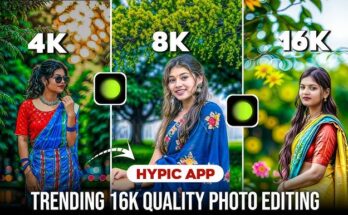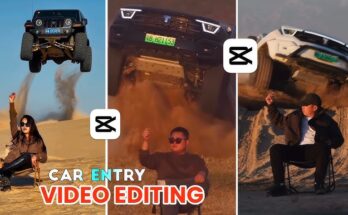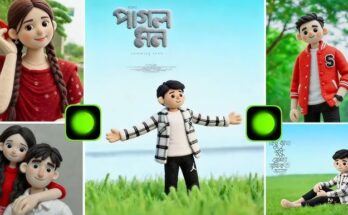The Moon has always fascinated artists, dreamers, and photographers alike. From ancient myths to modern space photography, it represents mystery, serenity, and beauty. But what if you could capture yourself or anyone else standing on the Moon — without ever leaving Earth?
Thanks to AI photo generation tools, this is now possible. You can create hyper-realistic AI Moon photos in just a few minutes — even if you’ve never used Photoshop or digital design software before.
In this comprehensive guide, we’ll show you how to generate an AI photo in the Moon — step by step. We’ll explore the best AI tools, creative prompts, realistic lighting techniques, and tips to make your Moon photos look cinematic, professional, and share-worthy.
By the end of this article, you’ll be ready to design your own AI lunar masterpiece that looks like it was shot by NASA.
1. What Is an AI Moon Photo?
An AI Moon photo is a digitally created image generated by artificial intelligence that places a person, object, or scene in a Moon-like environment. It can look hyper-realistic, cinematic, or even surreal — depending on how you design it.
For example:
- You could create an image of yourself standing on the Moon in a spacesuit.
- You could design a romantic couple under the full Moon.
- Or you could make a fantasy version of the Moon with glowing neon colors.
AI Moon photos are created by entering descriptive prompts into AI art generators like Midjourney, Leonardo AI, DALL-E, or BlueWillow, which use text-to-image technology to bring your imagination to life.
2. Why AI Moon Photography Is Trending
AI Moon photography has exploded on social media — especially on Instagram, TikTok, and Pinterest. There are several reasons why:
A. It Looks Otherworldly
The Moon is a naturally cinematic subject. AI adds depth, lighting, and emotion, making even simple portraits look magical.
B. It’s Easy and Affordable
You don’t need a camera or space equipment — just an idea and an AI app.
C. It Fits Every Niche
From fashion and travel to sci-fi and storytelling, Moon photos can adapt to any theme.
D. Viral Potential
AI Moon images often go viral because of their mystical vibe, making them perfect for profile pictures, reels, or cover art.
3. Essential Tools to Create AI Moon Photos
Before we dive into the process, let’s look at some popular AI tools that can help you create professional-looking Moon photos:
1. Midjourney
- Works through Discord
- Creates cinematic, high-quality images
- Perfect for fantasy or realistic Moon environments
- Example prompt: “A man standing on the surface of the Moon, cinematic lighting, Earth visible in the background”
2. Leonardo AI
- Beginner-friendly
- Allows you to upload your face
- Great for creating detailed lunar portraits
3. DALL-E 3
- Built into ChatGPT (Pro users)
- Excellent for creative storytelling scenes
- Easy text-to-image interface
4. BlueWillow
- Free and Discord-based
- Ideal for quick AI Moon photo experiments
5. Adobe Firefly
- Integrated with Photoshop
- Lets you generate and edit directly in your workspace
4. Step-by-Step Guide: How to Generate an AI Photo in Moon
Creating a Moon photo with AI is easier than you think. Let’s break it down step by step.
Step 1: Choose Your AI Generator
Select a generator that fits your goals:
- Midjourney: For artistic and cinematic quality
- Leonardo AI: For portraits and realism
- DALL-E 3: For storytelling and unique compositions
Step 2: Upload or Describe Your Subject
If your chosen tool supports face uploads (like Leonardo AI or Firefly), upload your image.
Otherwise, describe your subject in detail:
“A young woman wearing a white space suit, standing on the surface of the Moon, looking toward Earth.”
Step 3: Craft a Perfect AI Prompt
Your prompt is everything. It tells the AI what to create.
A strong prompt includes:
- Subject (who or what)
- Setting (where)
- Mood or tone
- Style (realistic, cinematic, fantasy)
- Lighting details
Example:
“A cinematic portrait of an astronaut standing on the Moon under a glowing blue Earth, ultra-realistic lighting, detailed lunar surface, 8K resolution.”
Step 4: Customize the Background
You can modify:
- Moon craters and texture
- Stars and galaxies
- Reflections from Earthlight
- Glowing mist or dust effects
These details make your image look immersive.
Step 5: Adjust Lighting and Shadows
The Moon has harsh contrast — bright highlights and deep shadows.
Use AI tools or photo editors to add realistic lighting:
- Adjust brightness to simulate sunlight from one direction.
- Add soft shadows for depth.
- Apply a bluish-white tone to mimic Moonlight.
Step 6: Add Lunar Details
To make it realistic:
- Include Earth in the background
- Add space dust, stars, or floating particles
- Enhance the Moon texture with small craters and dust
Step 7: Export and Enhance
Download your final image and enhance it with:
- Lightroom or Snapseed for contrast and color correction
- Canva for text overlays
- CapCut if turning your photo into a short AI video
5. The Best AI Prompts for Moon Photos
Here are some ready-to-use prompts to inspire your AI Moon creations:
- “A man standing on the Moon holding a glowing orb, cinematic lighting, Earth in the sky, ultra-detailed.”
- “A couple sitting on the Moon edge watching Earthrise, dreamy soft light, pastel color tones.”
- “Fantasy Moon landscape with glowing crystals, misty atmosphere, high detail 8K.”
- “Astronaut removing helmet on the Moon, golden sunset reflection, emotional cinematic tone.”
- “AI portrait of a woman floating above the Moon surface, galaxy in background, ethereal lighting.”
6. How to Create AI Moon Photos with Yourself in It
This is where things get personal and fun. You can put yourself on the Moon using AI — here’s how:
A. Take a Clean Photo
- Neutral background
- Good lighting on your face
- Avoid filters
B. Upload It to Leonardo AI or Firefly
These platforms let AI detect your face automatically.
C. Describe the Scene
“Generate a realistic portrait of me standing on the Moon wearing a spacesuit, cinematic lighting, Earth visible in the sky.”
D. Refine Results
If the lighting or outfit looks off, adjust the prompt with phrases like:
- “White glow reflection on face”
- “Soft lunar dust under feet”
- “Dramatic moonlight shadow on surface”
7. AI Moon Photography Styles to Try
You can experiment with different themes to make your Moon photos stand out.
| Style | Description | Example Prompt |
| Cinematic Realism | Looks like a movie still | “Astronaut standing on Moon, sunlight flare, detailed spacesuit, realistic shadows.†|
| Fantasy Glow | Surreal colors, glowing moons | “Moon made of crystal, woman levitating, neon reflections.†|
| Romantic Night | Dreamy, soft, emotional | “Couple sitting on Moon edge, holding hands, surrounded by stars.†|
| Sci-Fi Action | Futuristic or epic | “Spaceship landing on Moon, soldier watching horizon, smoke and light trails.†|
| Minimal Art | Clean and calm | “Single figure walking on empty Moon plain under starlit sky.†|
8. Editing and Enhancing AI Moon Photos
Even the best AI images benefit from a little post-processing.
Tools You Can Use:
- Lightroom / Snapseed: For contrast, exposure, and tone curves
- Canva: For adding text or filters
- PicsArt / Remini: For face detail enhancement
Recommended Edits:
- Increase contrast slightly for cinematic feel
- Reduce saturation for realism
- Add blue-gray tones for Moon authenticity
- Apply grain or lens flare for texture
9. Tips for Viral AI Moon Posts on Instagram and TikTok
Want your AI Moon photos to go viral? Follow these strategies:
A. Use Trending Hashtags
Examples:
- #AIMoonPhoto
- #AIGeneratedArt
- #LunarPhotography
- #AIPhotoTrend
- #DigitalDreamscape
B. Create a Short AI Video
Turn your still image into a motion scene using CapCut or Runway ML. Add sound effects of space or calm music.
C. Add Captivating Captions
Example:
“Dreaming beyond Earth 🌕✨ #AIArt #MoonVibes”
D. Post at Peak Times
The best engagement times:
- Instagram: 6 PM–9 PM
- TikTok: 7 PM–10 PM
PROMPT:
A 20-year-old young handsome man on the surface of the moon, crouching on one knee beside the folding chair, holding a steaming coffee mug close to his face as he takes a thoughtful sip, while looking toward the Earth in the starry night sky. He is wearing modern casual streetwear, black pants, stylish sneakers, and a white cap. On the chair next to him sits a small vintage coffee grinder. The camera is positioned at a low-angle close shot from the front-left, capturing his facial expression clearly, the textures of the lunar surface, and the glowing Earth majestically in the background. Ultra detailed lunar surface, 8K resolution, hyper realistic, cinematic lighting, DSLR photo quality, sharp focus, highly detailed textures, dramatic composition, space ambience, ultra high definition. Signature: AmanZaid Creations. Keep my face exactly the same as the uploaded photo. Do not change or edit my face.
10. Common Mistakes to Avoid
- Over-Editing – Too many filters can make it look fake.
- Weak Prompts – Missing detail in your prompt leads to poor results.
- Ignoring Lighting – Realistic shadows make or break your Moon photo.
- Low Resolution – Always generate at high quality (4K or 8K).
- No Personal Touch – Add yourself or an emotional story to stand out.
12. Final Thoughts
Creating AI Moon photos is one of the most exciting ways to blend imagination, technology, and art. With a few creative prompts and the right tools, you can transform ordinary portraits into cosmic masterpieces — without any design background.
Whether you’re creating content for Instagram, TikTok, or your own portfolio, AI Moon photography opens a universe of creative possibilities. The Moon isn’t just 384,000 kilometers away anymore — it’s right at your fingertips.
So what are you waiting for?
✨ Launch your creativity — and create your first AI Moon photo today! 🌕
For More Information Visit



